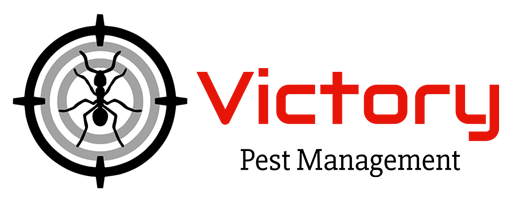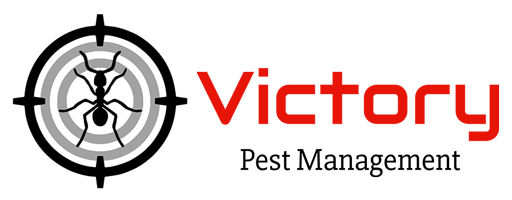Pests That Can Hurt Your Home’s Value
Pests That Can Lower Property Value And Cause Expensive Damage
When people think about preserving the value of their home, pests don’t always come to mind right away. But they should. The truth is, when unwelcome critters move in, the damage can be much more than just annoying. Left unchecked, pest problems can quietly chip away at a property’s integrity, turning what might look like a dream home on the surface into something buyers want to walk away from. The effects aren’t just cosmetic—they’re structural, financial, and emotional.
Structural Damage That’s Hiding In Plain Sight
Some of the worst damage pests cause is the kind you can't see right away. Termites, for instance, don’t need to announce their arrival with scratching sounds or chewed-up food packaging. They get to work quietly, gnawing their way through support beams, joists, and subfloors. Over time, the destruction they cause can weaken the very bones of a house. A structure that looks fine on the outside might actually have compromised flooring, sagging ceilings, or warped doorframes—all because a hidden colony was allowed to thrive.
Rodents, too, bring a special kind of havoc with them. It’s not just the chewing of wires, insulation, and drywall that makes them a problem. They create nesting sites in places you wouldn’t think to check, and their presence invites moisture buildup and mold—both major red flags for inspectors and appraisers. Even carpenter ants, though not as notorious as termites, can tunnel through wood and reduce the strength of framing materials over time. And wood-boring beetles? They often go unnoticed until floors feel soft or walls start crumbling in corners. All of this can lead to expensive repairs that eat into equity and scare off potential buyers who see signs of pest issues as a much bigger problem than just needing a few traps or sprays.
The Not-So-Obvious Health Hazards
What many homeowners don’t realize is that a pest problem doesn’t just impact the structure—it can impact health, too. And when buyers tour a property, they’re not just looking for charm and curb appeal. They’re thinking about air quality, cleanliness, and whether the space is fit for their family. Roaches, for instance, leave behind allergens that can trigger asthma and other respiratory issues. Even long after they’re gone, traces of their presence can linger in air ducts, on surfaces, and in hidden areas.
Rodents, especially mice and rats, leave urine and droppings in their paths, which can carry bacteria and spread disease. Add in fleas, mites, and ticks they might be harboring, and suddenly the issue grows far beyond a few critters scurrying in the attic. Silverfish and pantry pests like grain beetles might seem harmless at first glance, but their presence can point to underlying moisture issues or food contamination. When prospective buyers catch wind of an infestation—past or present—it can seriously impact their interest in the property, not to mention its appraised value. A home that once seemed move-in ready can quickly become a house that needs professional cleaning, pest control, and sometimes even remodeling just to bring it back to livable condition.
A Reputation That Follows The Home
Pest issues have a way of sticking around in more ways than one. Even if the infestation has been handled, the reputation of a home with past pest problems can linger in records or inspection reports. Realtors and buyers alike pay close attention to disclosures, and if termites or rodents are mentioned—even from years ago—it can lead to second guesses or lower offers. People tend to imagine the worst, especially when pests are involved. They picture ongoing problems, hidden damage, and unexpected costs that they might have to deal with after closing.
It’s not just about what’s on paper either. Odors, stains, or even just an uneasy feeling that something isn’t quite right can give the impression that the home was neglected. Once that impression sets in, it’s hard to undo. Homes with a history of pests often sit on the market longer, and when they do sell, they can go for less than comparable properties nearby. That drop in value isn’t always based on hard numbers—it’s about perception. And once that perception is damaged, it can be incredibly difficult to recover.
Even a pest control report that gives the all-clear might not be enough to rebuild trust with a buyer who’s unsure. They may worry that the problems will come back or that repairs were only cosmetic. That doubt alone can lead to hesitation, negotiation delays, and the kind of last-minute withdrawal that’s frustrating for sellers and agents alike.
The Long-Term Financial Toll
Sometimes, the impact of pests doesn’t hit all at once. It builds gradually. Homeowners might put off calling for help, thinking they can deal with it on their own. Maybe they set traps, spray a few areas, or plug holes where they think critters are getting in. But without a thorough inspection and ongoing management, those pests keep coming back—or never leave in the first place.
Over time, small issues become big ones. Insulation gets shredded. Wiring gets chewed. Moisture builds up in the walls or attic. And as the years go by, these hidden problems add up to serious costs. What could’ve been handled early with professional care turns into full-scale repairs and replacements. All that takes a toll, not just financially but emotionally, especially when trying to sell or refinance. When a home has lingering pest damage, appraisers can devalue it significantly—sometimes by tens of thousands of dollars, depending on the severity and type of infestation.
And it’s not just about resale. Even if you’re planning to stay in the home long-term, pests chip away at your investment. They affect energy efficiency, indoor comfort, and even peace of mind. It’s hard to enjoy your home when you’re constantly wondering what’s crawling behind the walls or nesting under the floorboards. Preventative action may not seem urgent at first, but over the years, it can be the difference between a strong return on investment—or a long list of costly regrets.
Protecting the value of your home means staying ahead of problems before they snowball—and that includes pests. They can quietly destroy wood, compromise insulation, spread illness, and leave behind a stigma that’s tough to shake. At Victory Pest Management, we’ve seen firsthand just how much damage pests can cause when left unchecked. That’s why we take a proactive, thorough approach to identifying problems early and helping homeowners maintain the integrity and worth of their properties. If you suspect something might be lurking where you can’t see it, or if you just want peace of mind that everything’s in good shape, it's time to contact us. Let’s protect your home—not just from pests, but from the long-term costs they bring with them



